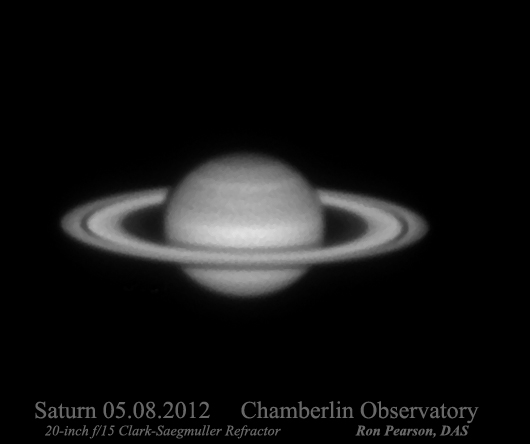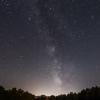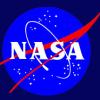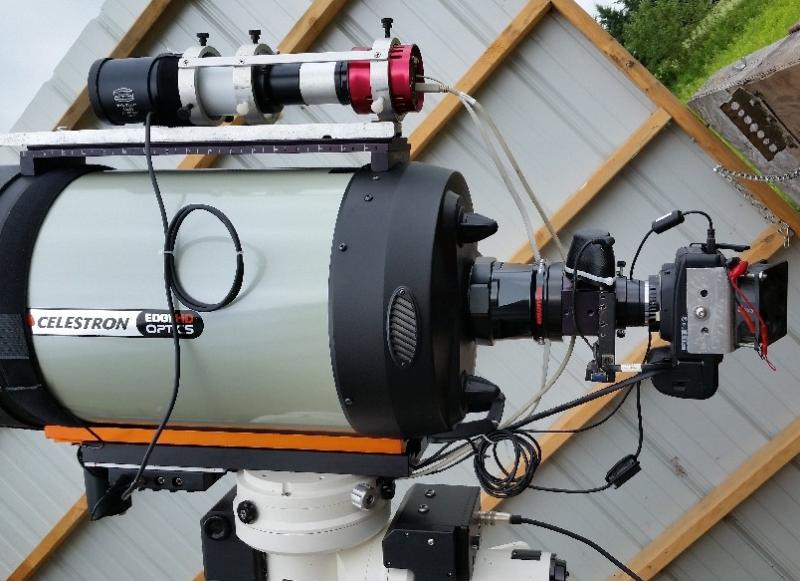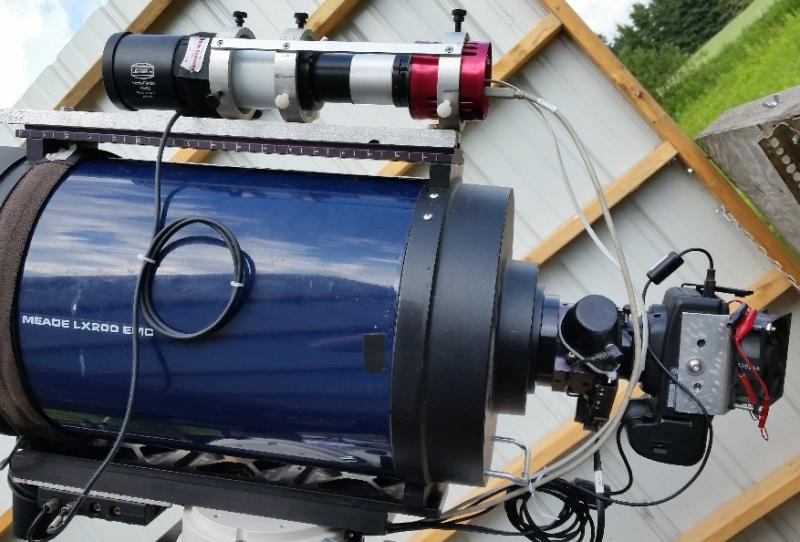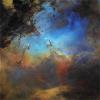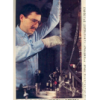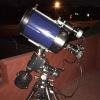
Do NOT use a guide scope with a C11 Edge
#1

Posted 05 July 2016 - 12:57 PM
I am talking about DSO's at f7 or f10, and any exposure beyond about 100 seconds.
Prior to receiving my Edge, I took some final 15min photos with my usual guide scope guided Meade 10" setup. All good as usual.
When the Celestron arrived, I moved my camera setup and guide scope setup undisturbed over to it, No good. Only the 3.29" adaptor changed, as Meade's is 3.25"
After much discussion with Celestron and on the forums, it was decided the scope was eligible for warrantee repair. Celestron tore it down and rebuilt it from the bottom up and returned it to me. Same problem.
They sent me a new scope. Same problem.
In between times I moved my camera and guide scope setups back to the Meade. All good.
So.... imo, forget about trying to successfully guide a C11 Edge with a guide scope.
During the course of forum discussions, I heard over and over that different ones had wrestled with their Edge, and the common issues associated with using a guide scope, and eventually ended up with an OAG, and have never looked back since. Imo, if you plan on imaging DSO's with this scope, plan on needing an OAG.
A few claimed to be successful using a guide scope. But further inquiry often revealed they were Not talking about an Edge HD, or were using shorter times, or a FaStar setup, or some other fast config, or they had a memory of long ago before they went to an OAG, or it works sometimes but not reliably. So if you are consistently successful using a guide scope, well good for you. My advice, if you are a newbie, don't waste you time. or even a long time experienced journeyman astrophotographer thinking of buying an Edge, Don't expect consistent (if any) acceptable results using a guide scope. Plan on also buying what it takes to switch to OAG guiding.
Grrrrrrr
Ettu
#2

Posted 05 July 2016 - 01:06 PM
I know we have discussed this before, but I would have recommended the same thing for a Meade.![]() There is still some debate as to where the flexure is. I felt that it was at least partially in the mirror, but some users have used EdgeHD OTAs unguided (with mounts like the 10 Micron), which would imply that the flexure isn't in the mirror. However, data (that there is little flexure in the mirror) is scant and I switched to an OAG long ago, and didn't research it further.
There is still some debate as to where the flexure is. I felt that it was at least partially in the mirror, but some users have used EdgeHD OTAs unguided (with mounts like the 10 Micron), which would imply that the flexure isn't in the mirror. However, data (that there is little flexure in the mirror) is scant and I switched to an OAG long ago, and didn't research it further.
#3

Posted 05 July 2016 - 01:40 PM
I know we have discussed this before, but I would have recommended the same thing for a Meade.
There is still some debate as to where the flexure is. I felt that it was at least partially in the mirror, but some users have used EdgeHD OTAs unguided (with mounts like the 10 Micron), which would imply that the flexure isn't in the mirror. However, data (that there is little flexure in the mirror) is scant and I switched to an OAG long ago, and didn't research it further.
Yep, thanks Syscore for your part in that earlier discussion.
I was thinking of bringing up the original thread, but at that time I had a question.
Now after quite some time and experience, I felt it needed a statement, and fair warning.
#4

Posted 05 July 2016 - 03:02 PM
Guidescopes in general are tough but I always had good luck with the 50mm finder scope guided on my CPC + wedge.
#5

Posted 05 July 2016 - 06:09 PM
I've found I can't use a guidescope on _any_ scope with a FL of greater than about 1500mm and even that is pushing it. Any tiny flexure anywhere in the imaging train or in the guidescope will get you at those FLs
So I always use either an off axis guider or the onboard guide chip of the imaging camera now unless I am at really short FL.
#6

Posted 05 July 2016 - 06:29 PM
I use a guide-scope all the time with a C14 Edge when I use the HyperStar adapter for wide field work. You have to be very careful about loose mechanics and flexure but it can work pretty well. That setup benefits quite a bit from the short exposures enabled by the HyperStar. I've also used a guide-scope with a C14 at the F/11 output and that too can work; however, I've never claimed that it is the best way to go. Guiding through the scope with OAG or ONAG is much a much better way to go.
John
#7

Posted 05 July 2016 - 08:35 PM
The part that bugs me, and I feel unfairly leads many unwitting down a long frustrating path of trying to get it to work, is Celestron's claim of being able to guide with a guide scope. With their proviso that, you MAY want to CONSIDER going to an off axis guider, at around 10 min exposures. Yeah, but what doesn't get said is that depends on how tolerant you are of elongated stars before that.
Sticking to the promise of the advertising hype over the last 6 months, (and it must be admitted my own past success with a different scope) has cost me and Celestron a lot of time and money, trying and failing to repair a problem that can't be fixed. Maybe the right scope out of the box will work, but I've had 3 samples now, so now I'm out. I think I know maybe one reason why from time to time you see a brand new Edge for sale, little used, from experienced users, discounted about the amount they would loose anyway trying to return it.
I will go to an OAG.
I have seriously considered returning this scope, taking the 15% restocking hit, and spending $13,000.00 for something like Starzonia's 12.5" Hyperion. But that of course is the problem.... the $13,000.00. And my wife's objection. What I have gotten out of the C11 Edges I've had over these last 6 months, has indicated to me the promise of why people buy and praise this scope. Good stars over a fairly wide FOV for a reasonable price. I hope That will yet prove to be true.
Edited by Ettu, 05 July 2016 - 08:49 PM.
#8

Posted 05 July 2016 - 09:34 PM
John
#9

Posted 06 July 2016 - 11:59 AM
Sorry if this is a redundant question -but I've just come on this thread after being away some weeks, and contemplating an 11 Edge sometime. Are you saying the OTA of the 11 Edge allows flexure of guide-scope rings and/or mount, or is it all in some tiny mirror shifts or movements even with the locks? Or did you not ever figure out the heart of the problem? thanks. Ron
#10

Posted 06 July 2016 - 03:10 PM
Sorry if this is a redundant question -but I've just come on this thread after being away some weeks, and contemplating an 11 Edge sometime. Are you saying the OTA of the 11 Edge allows flexure of guide-scope rings and/or mount, or is it all in some tiny mirror shifts or movements even with the locks? Or did you not ever figure out the heart of the problem? thanks. Ron
Hi Ron,
Yes, I am saying that imo there is something flexing with the C11 Edge. Either in the scope itself, or in it's ability to carry a guide scope. I'll include some detail below.
In the end, the heart of my argument comes down to this, I can exchange the C11 OTA for the M10 (10" Meade classic), and the problem comes and goes respectively.
I have not figured out the problem. I would love to figure it out. I have some ability and experience digging into these things, BUT, if I open up the scope, Celestron says the warrantee is automatically off. Which is understandable. I didn't want to loose my warrantee. After much discussion, the consensus was that something was wrong with the scope. To their credit, Celestron rebuilt it, and now has replaced it. I really can't ask for any more. But the problem remains. At this point I am ready to loose the warrantee, and figure it out, or give it up and go OAG.
Here's some info, and a short list of checks.
1. The orange dove tail that the scope comes with is not strong enough.
Not true. I can put a Losmandy's version on the other side, mount it that way, result = no difference.
2. Guide scope too heavy, warping the OTA.
Not true. I started with a 22 lb guide scope arrangement, and quickly went back to my tried and true 5 lb version. Little if any difference. I'm not convinced the OTA isn't warping, but when the 5 lb version didn't work, I didn't check any further. There was no chance I could get much lighter.
3. Something shifting inside the OTA
Something to this. I pointed out to Celestron that defocused stars with perfectly centered doughnut holes when pointing to the zenith, sagged when pointed near the horizon. I also pointed out dust motes (which show up wonderfully well in defocused stars) moved considerably too, consistent with the way the direction the doughnut hole's sagged. Is this sufficient to account for what I was experiencing? Celestron did not tell me how much shift still meets their specification. The mirror locks hold the plane of the main mirror "level" enough imo, but I don't know about lateral shift.
4. Something in the image or guider setup is not sufficiently rigid on and with respect to the OTA.
No. I am familiar with the many design pitfalls, and undetected "gottcha" changes in an otherwise rigid set up that can occur. All I can say is I can move the components en mass from one OTA to the other and the problem, or not, follows accordingly. Just as an aside, many guide scope setups don't clamp the guide camera too. Too many just clamp the scope. Not good enough.
5. Polar alignment, or mount or mounting issues
Simply, No.
After all I've said, there is the sickening chance that the problem is me. But If there is something I'm doing, I don't know where to start. I am not new to astrophotography, or guiding with a guide scope. I've been doing it reasonably well for years, on several and both GEM and fork mounts, with several scopes and scope types. So far I can't get this one to work, as it should.
My advise, plan on needing to guide this one through the scope.
Ettu
#11

Posted 06 July 2016 - 03:54 PM
This is certainly not unique to the EdgeHD scopes. Virtually any system with a guide scope and telescope will suffer flexure. Any.
The question is whether or not you can detect it. Longer focal lengths make it more obvious. Longer exposures make it more obvious. Larger telescopes make it more obvious. Scopes that focus by moving a large mirror make it more obvious. Scopes with cheap focusers make it more obvious. When scopes start getting really large, they will flex even with fixed mirrors and very rigid focusers.
That's why the vast majority of folks with observatories and large scopes are using off-axis guiding. ONAG, which is somewhat new but gaining popularity, is also a good solution. Both OAG and ONAG carry the guide camera very close to the imaging camera, so any flexure is experienced by both cameras identically (and the guider can correct it).
After I had been imaging for a while, I started encountering it and didn't want to believe how universal an issue it is. Everything seemed rigid enough...but I could see the flex over time if I stacked the images without registering them. The guider logs showed excellent tracking. And when I tried the internal guide chip on my ST-10, it went completely away. I eventually ran out of other possible explanations.
My suggestion is to get an OAG (or ONAG) and be happy.
Edited by WadeH237, 06 July 2016 - 03:55 PM.
#12

Posted 06 July 2016 - 05:06 PM
At the same time - any telescope will be impossible to guide with a guidescope if the exposures are long enough and your star size is very small.
Very high end 'scopes with fixed mirrors are also guided with OAG for best results in long exposures. But for "adequate" results in short enough exposures you could use a guidescope.
If you have a high end setup with good mount modeling, you may do better in long exposures without guiding at all, compared to guiding with a guidescope. The guidescope could actually do more harm than good.
Cassegrains of any kind, including SCT's, are notorious for internal flexure. Professional observatory scopes have active optics to keep everything aligned as they move across the sky. There is no way to expect everything to be completely rigid at the sub arc-second scale over many minutes, with the weight distribution slowly changing.
There is a tendency to blame the primary mirror for sct flexure - but the whole system is flexing.
So - in short - sure you can guide an sct with a guidescope - if the exposures are short and the stars are large. But with any long focus 'scope and long exposures, for best results use OAG.
If you really want to use a guidescope and have more carefree imaging - image with a short and rigid refractor. There will be much less flexure because it doesn't have mirrors, and the stars will be larger in arc-seconds - so any flexure will be less visible. But you can't use it very well for detail in small galaxies.
Another alternative for guiding an sct with a guidescope is FlexRx, which is a free solution that compensates for flexure by measuring it in realtime. It has been demonstrated to work very well, both for f/10 imaging and hyperstar.
You can measure the flexure rate in arc-sec/minute with any system. It will never be exactly 0.0. Some systems will have a larger number than others. But if you expose long enough, the total shift in a long exposure system with small flexure will be the same as a short exposure with a high flexure system.
Frank
#13

Posted 06 July 2016 - 05:40 PM
Sorry if this is a redundant question -but I've just come on this thread after being away some weeks, and contemplating an 11 Edge sometime. Are you saying the OTA of the 11 Edge allows flexure of guide-scope rings and/or mount, or is it all in some tiny mirror shifts or movements even with the locks? Or did you not ever figure out the heart of the problem? thanks. Ron
Hi Ron,
Yes, I am saying that imo there is something flexing with the C11 Edge. Either in the scope itself, or in it's ability to carry a guide scope. I'll include some detail below.
In the end, the heart of my argument comes down to this, I can exchange the C11 OTA for the M10 (10" Meade classic), and the problem comes and goes respectively.
I have not figured out the problem. I would love to figure it out. I have some ability and experience digging into these things, BUT, if I open up the scope, Celestron says the warrantee is automatically off. Which is understandable. I didn't want to loose my warrantee. After much discussion, the consensus was that something was wrong with the scope. To their credit, Celestron rebuilt it, and now has replaced it. I really can't ask for any more. But the problem remains. At this point I am ready to loose the warrantee, and figure it out, or give it up and go OAG.
Here's some info, and a short list of checks.
1. The orange dove tail that the scope comes with is not strong enough.
Not true. I can put a Losmandy's version on the other side, mount it that way, result = no difference.
2. Guide scope too heavy, warping the OTA.
Not true. I started with a 22 lb guide scope arrangement, and quickly went back to my tried and true 5 lb version. Little if any difference. I'm not convinced the OTA isn't warping, but when the 5 lb version didn't work, I didn't check any further. There was no chance I could get much lighter.
3. Something shifting inside the OTA
Something to this. I pointed out to Celestron that defocused stars with perfectly centered doughnut holes when pointing to the zenith, sagged when pointed near the horizon. I also pointed out dust motes (which show up wonderfully well in defocused stars) moved considerably too, consistent with the way the direction the doughnut hole's sagged. Is this sufficient to account for what I was experiencing? Celestron did not tell me how much shift still meets their specification. The mirror locks hold the plane of the main mirror "level" enough imo, but I don't know about lateral shift.
4. Something in the image or guider setup is not sufficiently rigid on and with respect to the OTA.
No. I am familiar with the many design pitfalls, and undetected "gottcha" changes in an otherwise rigid set up that can occur. All I can say is I can move the components en mass from one OTA to the other and the problem, or not, follows accordingly. Just as an aside, many guide scope setups don't clamp the guide camera too. Too many just clamp the scope. Not good enough.
5. Polar alignment, or mount or mounting issues
Simply, No.
After all I've said, there is the sickening chance that the problem is me. But If there is something I'm doing, I don't know where to start. I am not new to astrophotography, or guiding with a guide scope. I've been doing it reasonably well for years, on several and both GEM and fork mounts, with several scopes and scope types. So far I can't get this one to work, as it should.
My advise, plan on needing to guide this one through the scope.
Ettu
Thanks for the detailed explanation. On my 10" SCT I mount the guidescope-camera on the front of a losmandy saddle plate that sticks out just enough to slide on a losmandy plate with the small rings and scope. This way it hangs under the scope's nose and doesn't load the tube and also keeps the C.G. lower. Its also about 5 lbs. I think. Works well, and if you could do that with the Edge it might eliminate any possible tube flexure. Ron
#14

Posted 06 July 2016 - 06:30 PM
Just to show how newbie I am of what path I will take for the switch to OAG, what is ONAG ?
#15

Posted 06 July 2016 - 07:06 PM
This is certainly not unique to the EdgeHD scopes. Virtually any system with a guide scope and telescope will suffer flexure. Any.
The question is whether or not you can detect it. Longer focal lengths make it more obvious. Longer exposures make it more obvious. Larger telescopes make it more obvious. Scopes that focus by moving a large mirror make it more obvious. Scopes with cheap focusers make it more obvious. When scopes start getting really large, they will flex even with fixed mirrors and very rigid focusers.
That's why the vast majority of folks with observatories and large scopes are using off-axis guiding. ONAG, which is somewhat new but gaining popularity, is also a good solution. Both OAG and ONAG carry the guide camera very close to the imaging camera, so any flexure is experienced by both cameras identically (and the guider can correct it).
After I had been imaging for a while, I started encountering it and didn't want to believe how universal an issue it is. Everything seemed rigid enough...but I could see the flex over time if I stacked the images without registering them. The guider logs showed excellent tracking. And when I tried the internal guide chip on my ST-10, it went completely away. I eventually ran out of other possible explanations.
My suggestion is to get an OAG (or ONAG) and be happy.
Hi wade,
I agree pretty much down the line with your post. O(N)AG covers a multitude of sins. I agree it is the best practice method. Especially as your skill and critical acceptance level goes up.
It's just that with a guide scope on a classic SCT, at my maximum exposure times (10min usually, 15min exceptionally) and focal lengths (1800mm), I have become accustom to consistently acceptable results. For me, the question since the very 1st 10 min exposure I took is, is it something I'm doing, or is this the nature of this scope. I contend it is the latter.
That's fine if you know this up front. Which is why at this point I chose to make this a topic title. I didn't expect the amount of flexure to be as much as it is. Imo I fell victim to advertising hype hope.
#16

Posted 06 July 2016 - 07:17 PM
...<snip>...
Another alternative for guiding an sct with a guidescope is FlexRx, which is a free solution that compensates for flexure by measuring it in realtime. It has been demonstrated to work very well, both for f/10 imaging and hyperstar.
You can measure the flexure rate in arc-sec/minute with any system. It will never be exactly 0.0. Some systems will have a larger number than others. But if you expose long enough, the total shift in a long exposure system with small flexure will be the same as a short exposure with a high flexure system.
Frank
Very interesting Frank,
One of the things I noticed, is that the amount of shift is quite consistent for a given part of the sky.
Being that the program it is free, I just might give it a try. If it can handle the amount of shift I'm getting, and auto compensate for various areas of the sky, that will be pretty impressive. It aught to be even more effective for those setups exhibiting less shift, and just the ticket for those hoping to extend their limitations.
#17

Posted 06 July 2016 - 07:45 PM
Just to show how newbie I am of what path I will take for the switch to OAG, what is ONAG ?
This article on the manufacturer's web page explains it. I have one, but have not had a chance to try it yet (I'll try it next spring when I use the C14 for galaxy season).
There are a few folks here that have been using it and have had great results.
-Wade
#18

Posted 06 July 2016 - 08:08 PM
These are the kind of definitive statements I appreciate. Very helpful in deciding what path to take. Thanks for sharing!
Ciao,
Mel
#19

Posted 07 July 2016 - 02:51 AM
Very interesting Frank,
One of the things I noticed, is that the amount of shift is quite consistent for a given part of the sky.
Being that the program it is free, I just might give it a try. If it can handle the amount of shift I'm getting, and auto compensate for various areas of the sky, that will be pretty impressive. It aught to be even more effective for those setups exhibiting less shift, and just the ticket for those hoping to extend their limitations.
Hi-
I would be happy to help anyone with FlexRx - but it does require a fair amount of setup and effort - because several components are needed to work in harmony. And it only works with MetaGuide as the guide software - along with a video camera for guiding.
So I don't recommend it for all people. I mainly want to point out that it is possible, with software, to correct for flexure as long as it is fairly steady over time. It is the only tool I'm aware of that will allow you to get tight stars with a guidescope - when you have flexure. But it does add complexity over the otherwise very easy - but not always high performing - guidescope guiding.
Frank
#20

Posted 07 July 2016 - 08:31 AM
The part that bugs me, and I feel unfairly leads many unwitting down a long frustrating path of trying to get it to work, is Celestron's claim of being able to guide with a guide scope. With their proviso that, you MAY want to CONSIDER going to an off axis guider, at around 10 min exposures. Yeah, but what doesn't get said is that depends on how tolerant you are of elongated stars before that.
Sticking to the promise of the advertising hype over the last 6 months, (and it must be admitted my own past success with a different scope) has cost me and Celestron a lot of time and money, trying and failing to repair a problem that can't be fixed. Maybe the right scope out of the box will work, but I've had 3 samples now, so now I'm out. I think I know maybe one reason why from time to time you see a brand new Edge for sale, little used, from experienced users, discounted about the amount they would loose anyway trying to return it.
I will go to an OAG.
I have seriously considered returning this scope, taking the 15% restocking hit, and spending $13,000.00 for something like Starzonia's 12.5" Hyperion. But that of course is the problem.... the $13,000.00. And my wife's objection. What I have gotten out of the C11 Edges I've had over these last 6 months, has indicated to me the promise of why people buy and praise this scope. Good stars over a fairly wide FOV for a reasonable price. I hope That will yet prove to be true.
So what is it that makes it work on a Meade and not on the Celestron, and how are you so sure it's not the mount?
Edited by SandyHouTex, 07 July 2016 - 08:49 AM.
#21

Posted 07 July 2016 - 08:45 AM
Sorry if this is a redundant question -but I've just come on this thread after being away some weeks, and contemplating an 11 Edge sometime. Are you saying the OTA of the 11 Edge allows flexure of guide-scope rings and/or mount, or is it all in some tiny mirror shifts or movements even with the locks? Or did you not ever figure out the heart of the problem? thanks. Ron
Hi Ron,
Yes, I am saying that imo there is something flexing with the C11 Edge. Either in the scope itself, or in it's ability to carry a guide scope. I'll include some detail below.
In the end, the heart of my argument comes down to this, I can exchange the C11 OTA for the M10 (10" Meade classic), and the problem comes and goes respectively.
I have not figured out the problem. I would love to figure it out. I have some ability and experience digging into these things, BUT, if I open up the scope, Celestron says the warrantee is automatically off. Which is understandable. I didn't want to loose my warrantee. After much discussion, the consensus was that something was wrong with the scope. To their credit, Celestron rebuilt it, and now has replaced it. I really can't ask for any more. But the problem remains. At this point I am ready to loose the warrantee, and figure it out, or give it up and go OAG.
Here's some info, and a short list of checks.
1. The orange dove tail that the scope comes with is not strong enough.
Not true. I can put a Losmandy's version on the other side, mount it that way, result = no difference.
2. Guide scope too heavy, warping the OTA.
Not true. I started with a 22 lb guide scope arrangement, and quickly went back to my tried and true 5 lb version. Little if any difference. I'm not convinced the OTA isn't warping, but when the 5 lb version didn't work, I didn't check any further. There was no chance I could get much lighter.
3. Something shifting inside the OTA
Something to this. I pointed out to Celestron that defocused stars with perfectly centered doughnut holes when pointing to the zenith, sagged when pointed near the horizon. I also pointed out dust motes (which show up wonderfully well in defocused stars) moved considerably too, consistent with the way the direction the doughnut hole's sagged. Is this sufficient to account for what I was experiencing? Celestron did not tell me how much shift still meets their specification. The mirror locks hold the plane of the main mirror "level" enough imo, but I don't know about lateral shift.
4. Something in the image or guider setup is not sufficiently rigid on and with respect to the OTA.
No. I am familiar with the many design pitfalls, and undetected "gottcha" changes in an otherwise rigid set up that can occur. All I can say is I can move the components en mass from one OTA to the other and the problem, or not, follows accordingly. Just as an aside, many guide scope setups don't clamp the guide camera too. Too many just clamp the scope. Not good enough.
5. Polar alignment, or mount or mounting issues
Simply, No.
After all I've said, there is the sickening chance that the problem is me. But If there is something I'm doing, I don't know where to start. I am not new to astrophotography, or guiding with a guide scope. I've been doing it reasonably well for years, on several and both GEM and fork mounts, with several scopes and scope types. So far I can't get this one to work, as it should.
My advise, plan on needing to guide this one through the scope.
Ettu
There is one more thing that may need checking.
Even though you use the same guidescope and it works on the Meade but doesn't work on the Edge, this does not imply the Edge has a problem.
It may be a long shot but the way the guide scope is attached to the Meade may be different enough from the Edge to cause more flexure with the Edge . Could you post pictures of the Meade and Celestron setups ? It may be of some help to figure out your problem but it would also be of great help to others contmplating a similar gear setup , at least we'd learn what to avoid and what doesn't quite work . We're very much used to estimate how undersized objects are based on strength but our technical instincts aren't used to estimate flexure at this level, where everything should be considered pretty much made of rubber or cheese .
#22

Posted 07 July 2016 - 03:29 PM
Just to show how newbie I am of what path I will take for the switch to OAG, what is ONAG ?
Check out this page:
https://www.innovati...est-images-yet/
John
#23

Posted 07 July 2016 - 06:12 PM
<snip>
Could you post pictures of the Meade and Celestron setups ? It may be of some help to figure out your problem but it would also be of great help to others contmplating a similar gear setup , at least we'd learn what to avoid and what doesn't quite work . We're very much used to estimate how undersized objects are based on strength but our technical instincts aren't used to estimate flexure at this level, where everything should be considered pretty much made of rubber or cheese .
Here you go Rich.
I need another pair of eyes, as I am at out of ideas.
#24

Posted 07 July 2016 - 08:58 PM
I know this isn't apples to apples, but my expensive refractor even had flexure issues. An OAG solved it in the end, but I with guide scopes for about 2 months before finally converting over. I put the same system on my C 9.25 (Atik One with built in OAG) and was able to guide the first night.
#25

Posted 08 July 2016 - 09:19 AM
<snip>
Could you post pictures of the Meade and Celestron setups ? It may be of some help to figure out your problem but it would also be of great help to others contmplating a similar gear setup , at least we'd learn what to avoid and what doesn't quite work . We're very much used to estimate how undersized objects are based on strength but our technical instincts aren't used to estimate flexure at this level, where everything should be considered pretty much made of rubber or cheese .
Here you go Rich.
I need another pair of eyes, as I am at out of ideas.
It seems as though there is a difference between the distance between the OTA and the camera for the Meade setup versus the Celestron setup. The Meade distance is a bit shorter than the Celestron distance. I would suspect the flexure is occuring in this area and has nothing to do with the Celestron HD OTA.
My $0.02.






